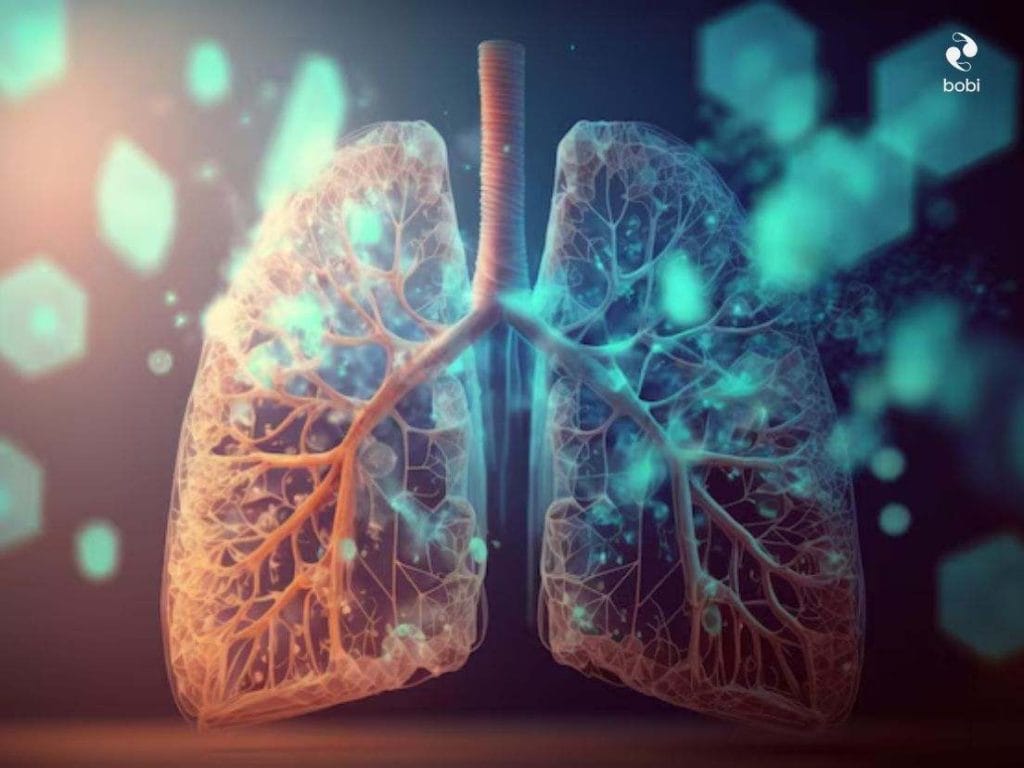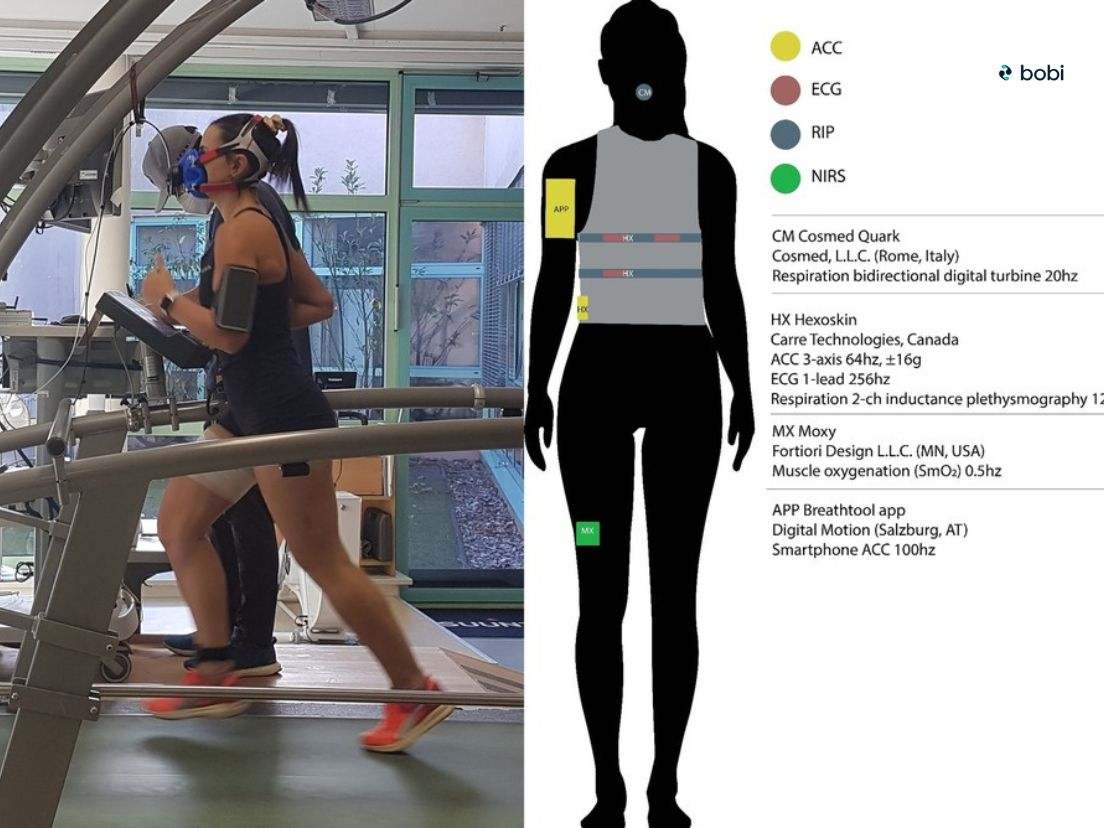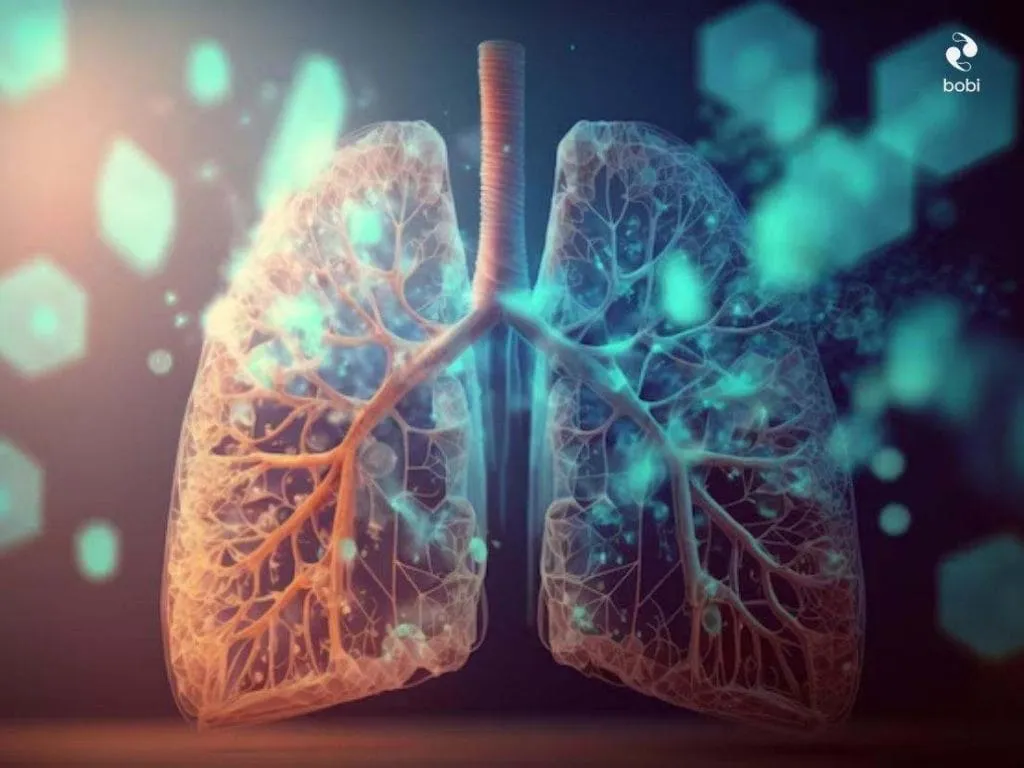
Within the field of human physiology, the intricate connection between our motor activities and respiratory rhythms is an area of growing interest, particularly in fields of health and performance optimization. A motor activity is something that involves specific movements of the body’s muscles to perform a certain task. There is a remarkable relationship between motor activity and our breathing rate. This connection is often referred to as motor-respiratory coupling. But what exactly is motor-respiratory coupling, and how is it relevant to everyday health and wellbeing? Let’s delve into these concepts to understand their significance and applications.
What is Motor-Respiratory Coupling?
While helping clients in the therapeutic setting I’ve noticed that many people lack awareness of how physical movement can influence breathing rate. Probably the clearest example of this is a horse at gallop which breathes once for every stride.
Motor-respiratory coupling refers to the coordinated relationship between voluntary motor activities and the rhythms of breathing. In simple words, it’s the synchronism of our breathing patterns with physical activities.
This happens when our nervous system correlates our respiratory muscles with the ones participating in physical movements. This phenomenon highlights how our body’s movements can influence our breathing patterns and vice versa.
Key Mechanisms of Motor-Respiratory Coupling
- Neural Integration: Our central nervous system plays a crucial role in motor-respiratory coupling. The motor cortex, responsible for planning and executing voluntary movements, communicates with the brainstem respiratory centers to modulate breathing patterns based on motor activity demands. In fact, the neurons responsible for movement in the hands and arms, for example, are known to run through the part of the brain (pre-Botzinger Complex) responsible for respiratory rhythm.
- Feedback Loops: Proprioceptive feedback from muscles and joints informs the brain about ongoing movements, prompting adjustments in respiration to meet the body’s oxygen needs and remove carbon dioxide efficiently.
- Autonomic Adjustments: Physical activities trigger autonomic nervous system responses, leading to changes in respiration rate and depth to match metabolic demands.
Understanding motor-respiratory coupling is not just for athletes. It’s crucial for anyone looking to enhance their physical health and mental well-being through improved breathing exercises synchronized with movement. This remains especially the case for children who very often struggle to develop and maintain the habit of slow, controlled breathing.
The Role of Motor-Respiratory Coupling in Health and Wellbeing
Motor-respiratory coupling has profound implications for enhancing our health and overall well-being. This phenomenon can be strategically used in various fields to improve physical, mental, and emotional health. Being a psychologist, I acknowledge that when we integrate these practices into our daily lives, we can experience notable benefits.
Its merits transcend the limits of our physical health and can prove a powerful tool for handling stress and promoting mindfulness.
Here’s a detailed look at how motor-respiratory coupling can be integrated into health and wellbeing practices.
Physical Rehabilitation
My daily involvement in the incorporation of mental health and physical activities makes me realize that motor-respiratory coupling is our key to unlocking the doors to an established breathing habit.
Neuroplasticity
- Neuroplastic Changes: Research shows that synchronized breathing and movement exercises can stimulate brain areas responsible for motor control. Rhythmic hand exercise, for example, has been shown to significantly increase the production of brain-derived neurotrophic factor (BNDF). BNDF is known to be crucial for neuroplasticity and is also related to moods/emotions.
Athletic Performance
I’ve noticed a stark difference in the performance of my athletic clients who master motor respiratory coupling than those who don’t.
Enhanced Performance and Endurance
- Strength Training: Athletes use motor-respiratory coupling to enhance performance. For instance, synchronizing breathing with lifting phases in weightlifting helps maintain stability and reduce the risk of injury. Controlled breathing supports core stability and optimizes oxygen delivery to muscles, enhancing endurance and strength.
- Endurance Sports: Runners and cyclists often practice breathing techniques that synchronize with their stride or pedal rhythm, which can improve efficiency and performance by ensuring that oxygen delivery is maximized during peak physical exertion.
Athletes who train their breath control as meticulously as their physical skills gain a marked edge in performance.
Mental Health and Stress Management
Furthermore, the phenomenon of motor-respiratory coupling has the same significance from a mental health perspective. The practices associated with motor-respiratory coupling are recommended for clients looking to effectively manage stress and are emerging as ‘ground zero’ for managing anxiety.
Anxiety Reduction and Relaxation
- Mind-Body Practices: Yoga and tai chi are prime examples of practices that integrate motor-respiratory coupling. These activities combine slow, deliberate movements with deep, rhythmic breathing to activate the parasympathetic nervous system, promoting relaxation and reducing stress levels.
- Therapeutic Applications: Controlled breathing exercises, when combined with motor activities, can significantly reduce anxiety. This is particularly useful in clinical settings where patients might benefit from techniques that help them manage stress and anxiety disorders.
Cognitive Function and Focus
Enhanced Concentration and Cognitive Performance
- Cognitive Benefits: Engaging in activities that involve motor-respiratory coupling can enhance cognitive functions such as attention, memory, and executive functions. The practice of synchronizing movements with breathing helps improve focus and mental clarity, which can be beneficial in both educational and professional settings.
- Meditative Practices: Techniques that involve synchronized breathing and hand movements, such as certain forms of meditation or mindfulness practices, can improve mental clarity and concentration by reducing cognitive load and promoting a state of relaxed alertness.
Chronic Pain Management
Pain management is a significant public health issue that affects a large number of people. The continued concern of opioid addiction, and related health complications, emphasizes non-pharmacological pain interventions.
Alleviating Pain through Controlled Breathing
- Pain Reduction: Motor-respiratory coupling can be used to manage chronic pain. Techniques such as diaphragmatic breathing combined with gentle motor activities can reduce pain perception and improve the quality of life for individuals suffering from chronic pain conditions. The synchronization of breath and movement can help modulate pain signals and promote relaxation.
- Physical Therapy: In physical therapy, integrating controlled breathing with exercises can help patients manage pain better and improve their tolerance to therapeutic activities. This approach is particularly effective for conditions like fibromyalgia and arthritis.
Practical Applications in Daily Life
Motor-respiratory coupling is not just a concept rather it has practical implications that have a transformative power for our lives. The daily integration of such motor movements into our lives will pave the way toward mindfulness and relaxation.
Everyday Stress Relief
- Routine Integration: Simple practices like incorporating rhythmic breathing with daily activities such as walking, cleaning, or even typing can have a calming effect. This integration helps maintain a balanced autonomic nervous system, reducing the overall stress load and improving day-to-day well-being.
- Mindfulness and Relaxation: Practicing mindful breathing while engaging in routine activities can transform them into opportunities for relaxation and mental refreshment, helping individuals maintain a healthier balance between work and personal life.
Habit Formation:
When we practice motor-respiratory coupling regularly, it helps form the habit of slow breathing. As the body becomes accustomed to the synchronized patterns, it can begin to adopt these patterns unconsciously, even outside of the specific activities.
Neural Adaptation:
Our body’s design allows us to adapt to new patterns. Over time, the consistent practice of slow, rhythmic breathing during activities can lead to the development of new neural pathways. These pathways support slower, more efficient breathing as a default.
With my years of personal experience in this domain and professional practice, I always vouch for the life-changing edge of motor-respiratory coupling. It’s not just an activity for physical vigor but a comprehensive perspective towards a healthy life by promoting a profound link between mind and body.

Motor-Respiratory Coupling: Influence of Hand Movements on Respiration Rate
I’ve noted in my practice as a psychologist that hand movements, especially the ones that involve fine motor skills, have a significant impact on our breathing rhythm. The intricate junction of neural pathways that links the respiratory centers with the brain’s motor cortex (control movement).
Mechanisms of Influence
- Neural Integration:
- Central Nervous System Coordination: The motor cortex and brainstem, including the pre-Bötzinger complex, integrate signals to adjust breathing in response to motor activity. When the motor cortex activates for hand movements, it can simultaneously send signals to the respiratory centers to modulate breathing patterns.
- Proprioceptive Feedback: Movements of the hands generate proprioceptive feedback, which is sent to the brain. This feedback informs the brain about the position and movement of the limbs, leading to adjustments in respiration to support motor activity.
- Autonomic Nervous System Response:
- Sympathetic Activation: Physical activities, including hand movements, can activate the sympathetic nervous system, increasing the respiration rate to meet the oxygen demand of the muscles.
- Parasympathetic Modulation: Controlled, rhythmic hand movements, such as those used in certain therapeutic exercises or relaxation techniques, can activate the parasympathetic nervous system, promoting relaxation and potentially slowing the respiration rate.
Practical Examples and Research
- Therapeutic Exercises:
- Hand Therapy and Breathing: Research has shown that rhythmic hand exercises, like squeezing a stress ball or manipulating therapy putty, can have calming effects on the nervous system, which can lead to a more regulated and slower breathing pattern. These exercises are often used in therapy to manage anxiety and promote relaxation.
- Rehabilitation and Recovery: In rehabilitation settings, combining hand movements with controlled breathing exercises can enhance motor recovery and improve respiratory efficiency. For example, patients recovering from a stroke may use synchronized breathing and hand movements to regain motor control and reduce anxiety.
- Sports and Performance:
- Athletic Training: Athletes often use techniques that involve synchronizing their breathing with hand movements to improve performance. For instance, rock climbers and weightlifters might coordinate their breaths with gripping actions to maintain focus and endurance.
- Musical Performance: Musicians, especially those playing wind instruments, must synchronize their hand movements with their breathing patterns. This coordination is crucial for maintaining the rhythm and quality of their performance.
- Mind-Body Practices:
- Yoga and Tai Chi: These practices incorporate hand movements with controlled breathing to promote physical and mental harmony. The synchronized breathing and movement patterns help reduce stress and enhance respiratory and motor function.
Scientific Insights
A recent study confirmed that motor-respiratory coupling exists with rhythmic hand exercise. This is a significant finding because it confirms what many of us have intuited through years of experience. Specific body movement can lead to the synchronisation of our breathing rate and this is now supported by a body of research.
Neural Pathways:
Studies indicate that the corticospinal and bulbospinal pathways play a significant role in coordinating motor activities and respiratory rhythms. These pathways facilitate communication between the motor cortex and brainstem respiratory centers, allowing for synchronized adjustments during hand movements and breathing.
Respiratory Modulation:
Research in neuroscience and physiology has demonstrated that engaging in fine motor activities can lead to more controlled and rhythmic breathing patterns. This modulation is beneficial for both cognitive and physical tasks, reducing performance anxiety and enhancing motor precision.
What is Respiratory Entrainment?

Respiratory entrainment refers to the synchronization of breathing patterns with external rhythms or internal physiological rhythms.
This concept is important in various fields, including health, sports, and rehabilitation, as it underscores the body’s ability to adapt its breathing to different stimuli, promoting efficiency and optimizing physiological functions.
Mechanisms of Respiratory Entrainment
- External Rhythms:
- Music and Rhythmic Sounds: Listening to music with a steady beat can lead to respiratory entrainment, where the breathing rate synchronizes with the tempo of the music. This can be particularly useful in therapeutic settings to promote relaxation and reduce anxiety.
- Metronomes: In some therapeutic and athletic training programs, a metronome is used to help individuals synchronize their breathing with the beats, improving focus and performance.
- Internal Rhythms:
- Physical Movements: Respiratory entrainment often occurs naturally during rhythmic physical activities like walking, running, or swimming. The breathing rate adjusts to match the rhythm of the movement, enhancing efficiency and endurance.
- Speech and Singing: When speaking or singing, the breathing pattern often entrains to the rhythm and pauses of speech, ensuring adequate breath support and vocal control.
Understanding Respiratory Entrainment vs. Motor-Respiratory Coupling
At this point, you may be confused between respiratory entrainment and motor-respiratory coupling. Respiratory entrainment and motor-respiratory coupling are related concepts that describe the synchronization of breathing with other physiological processes, but they differ in focus and application. Here’s a detailed comparison to clarify these concepts:
Respiratory Entrainment
Definition:
Respiratory entrainment is the synchronization of breathing patterns with external rhythms (such as music or a metronome) or internal physiological rhythms (such as the rhythm of speech or movement).
Mechanisms:
- External Rhythms: This includes synchronization with external stimuli like music beats, metronomes, or other rhythmic auditory cues.
- Internal Rhythms: This involves synchronization with the body’s internal rhythms, such as the timing of speech or repetitive movements.
Motor-Respiratory Coupling
Definition:
Motor-respiratory coupling refers to the coordinated relationship between voluntary motor activities (like hand movements or locomotion) and breathing patterns.
Mechanisms:
- Neural Integration: The motor cortex, which controls voluntary movements, communicates with brainstem respiratory centers to adjust breathing patterns based on motor activity demands.
- Proprioceptive Feedback: Movement-generated feedback informs the brain about the body’s position and motion. It prompts adjustments in respiration to meet the metabolic demands of the motor activity.
Key Differences
- Type of Synchronization:
- Respiratory Entrainment: Focuses on synchronizing breathing with external rhythms (like music) or internal physiological rhythms (like speech).
- Motor-Respiratory Coupling: Focuses on the synchronization of breathing with voluntary motor activities (like hand movements or running).
- Mechanisms Involved:
- Respiratory Entrainment: Primarily involves external rhythmic cues and internal physiological rhythms.
- Motor-Respiratory Coupling: Involves neural integration and proprioceptive feedback mechanisms to adjust breathing based on motor activity.
- Applications:
- Respiratory Entrainment: Commonly used for stress reduction, relaxation, and performance optimization through external rhythmic cues.
- Motor-Respiratory Coupling: Utilized in physical rehabilitation, athletic training, and mind-body practices to improve motor control, performance, and mental well-being.
Conclusion
Motor-respiratory coupling is a vital concept that underscores the interconnectedness of our respiratory and motor systems. By understanding and applying this relationship, especially through techniques like respiratory entrainment, we can enhance rehabilitation outcomes, optimize athletic performance, and improve overall well-being. As research continues to unfold, the practical applications of motor-respiratory coupling will likely expand, offering new insights and strategies for health and performance enhancement. By leveraging these insights, individuals can optimize their physical and mental health, making the most of the natural synergy between movement and breath.
Integrating motor-respiratory coupling techniques into your life isn’t just about better breathing; it’s about unlocking a fuller potential of the human body.




